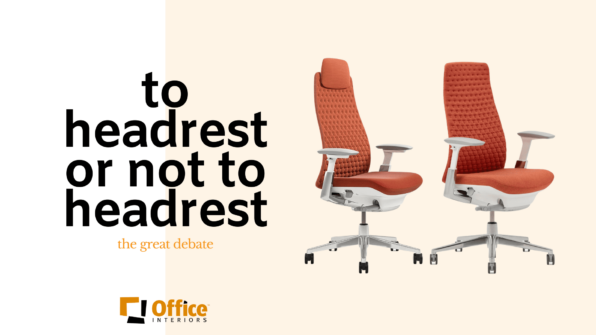Choosing the ideal task chair involves considering numerous features and options, and one of the most debated features is the headrest. Some argue that it is essential for comfort and proper posture, while others claim it’s unnecessary. So, do you really need a headrest on your office chair? Let’s dive into the great task chair debate.
What are Headrests?
Headrests are a common feature found on many task chairs, designed to support the head and neck during long periods of sitting. They typically consist of a padded cushion attached to the back of the chair, extending upwards to provide a comfortable resting place for the head. While not all task chairs have headrests, they are often considered an added luxury for those seeking optimal comfort and support in their workspace.
Understanding the Function of a Headrest
The primary function of a headrest is to promote proper alignment of the head and neck, reducing strain and preventing slouching and discomfort. It provides a comfortable resting place for your head, allowing you to maintain a more upright and ergonomic sitting position. Additionally, a headrest can help to alleviate tension in the upper body and shoulders, especially for individuals who spend significant amounts of time sitting at a desk.
An ergonomic headrest can make a significant difference in a chair’s overall comfort and support. It is especially beneficial for those who suffer from neck or back pain, as it provides additional support to promote proper spinal alignment.
However, not all headrests are created equal. Some may be adjustable, while some may not. For optimal ergonomics, they should be adjustable, allowing you to customize them to your preferences and needs. This feature ensures the headrest is at the ideal height and angle for your specific body type, promoting optimal comfort and support.
Do You Need a Headrest on Your Task Chair?
When deciding whether or not you need a headrest on your task chair, one crucial factor to consider is the type of work you do. The work style can significantly influence your sitting habits and the comfort and support you require from your office chair.
For example, a headrest can relieve your neck and shoulders if you spend long hours sitting at a desk working on a computer. This is especially beneficial for individuals who frequently engage in tasks that require them to look down or strain their necks, such as reading or working with documents.
On the other hand, if your work primarily involves physical movement or requires you to be on your feet most of the time, a headrest may not be as crucial. In this case, your focus should be finding a chair that provides adequate lumbar support and promotes proper posture.
Ultimately, determining the type of work you do will help you understand how much support your body needs while sitting. This knowledge will guide you in making an informed decision about whether a headrest is necessary for your task chair.
Weighing the Cost Versus Benefit
In deciding whether to invest in a task chair with a headrest, it’s crucial to consider the cost versus the benefits. Headrests often come with an extra expense, so determining if their advantages are worth the investment becomes essential. Here are three things to consider.
Personal comfort and well-being
A headrest can provide much-needed support and ease discomfort if you suffer from shoulder, neck, or back pain. If you want that extra support, the headrest may be for you.
Nature of work
If your job involves long hours of desk work, a headrest can improve your sitting experience. However, if your work is more physically demanding and you spend minimal time sitting, the benefit may not be worth the extra cost.
Budget and priorities
Investing in other ergonomic features, such as adjustable lumbar support or seat height, may be better if you have a limited budget. These features can impact your overall comfort and posture more than a headrest.
Aesthetics
Task chairs with headrests often give an executive and sophisticated appeal. If you are all about your chair exuding a sense of authority and importance, the benefit of a headrest may outweigh the cost.
So, to Headrest or Not to Headrest?
The final decision boils down to your personal needs and preferences. Let us know if you are on team headrest or team no headrest, and if you still need our help, kindly fill out this form.
Fola Adedeji
Marketing Coordinator
Office Interiors




